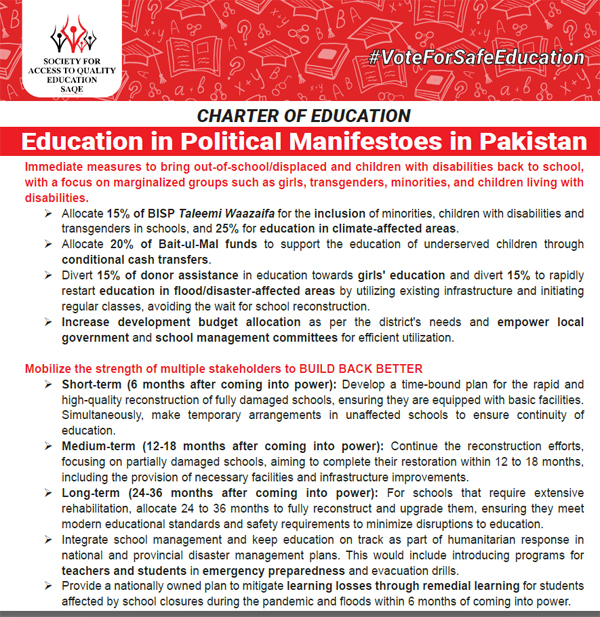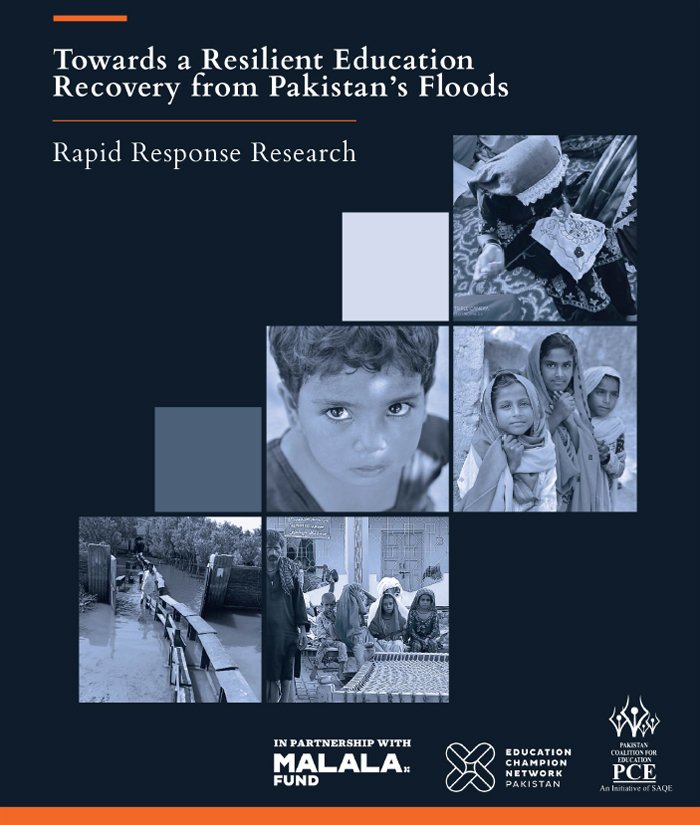Headline: Education is a matter of life and death for Pakistan
September 03, 2021
Muhammad Ali Jinnah, in one of his speeches shortly after independence equated education with Pakistan's ability to survive. The founder of Pakistan said, "Education is a matter of life and death for Pakistan". And yet here we are, 74 years later, hosting the world's largest illiterate and unskilled population.
Human life is impacted by the overarching role education plays and therefore, is the driving force for change in almost all aspects of life. Financing for education should be a top priority for the Federal, Provincial and Local governments as it is a vital investment for human and economic development. The ongoing pandemic and consequent school closure have further exacerbated the challenge to an extent where the need to enhance education financing is more important than ever. However, it is crucial to understand how the lack of funding and required expenditure is damaging the education system in Pakistan.
Pakistan is a known low-spender on Education among regional territories. According to the budget data made public by finance division, Pakistan plans to spend PKR 83.3 billion on education affairs and services in 2020/2021 depicting a slight increase from the revised budget of PKR 81.2 billion from the previous year. This year's education budget once again falls short of the international commitment of 4% if considered in terms of expenditure as a percentage to GDP. This is alarming because Pakistan has an estimated 22.8 million children aged 5-16 out of school. The deteriorating situation is also evident from the recent Human Development Report. According to this report presented by United Nations Development Program, Pakistan is ranked 152 out of 189 countries having not demonstrated any progress in key educational indicators such as literacy rate, gross enrolment ratio, and expenditure on education, as compared to the adjoining regional territories.
Expenditure on education in Pakistan as a percentage of GDP has been steadily rising since 2008 according to the Economic Survey 2021. However, the rise has been marginal as the outlook of the data reflects the sustained figure that neither meets the international commitment but also does not support the cause of transitioning the out-of-school children into the mainstream system as their large number cannot be completely facilitated with this meager annual rise. More importantly, the federal and provincial governments in Pakistan acknowledging, anticipating, and realizing the spillover of the pandemic in the education sector has not responded in the manner deemed acceptable and adequate. In contrast to the expectation, the government according to its own data available through the Economic Survey 2021 has significantly reduced the actual expenditure on education for the fiscal year 2019-2020. The expenditure has been brought down to 1.5 against the former value of 2.3 in terms of percentage of GDP. Even though education is a provincial subject, the onus to correct Pakistan's current miserable state of education spending as percentage of GDP lies largely on the federal government.
The direction of the provincial governments for the fiscal year 2019-2020 is the same as the federal government. Sindh government; the only exception in the list has increased its current expenditure to PKR165 billion against PKR153 billion for the year 2018-2019 as per the data available in the Economic Survey 2021 while the rest of the provincial governments have reduced their expenditures. The consequences of this significant reduction are reflected in the large number of students discontinuing their education either due to the closure of the schools or due to the unavailability of alternative models available such as the online deliverance of education. While the provincial governments have often surpassed their annual commitment targets, this expenditure has not been effective as evident from the Pakistan's education indicators. One of the primary reasons for this is the distribution of provincial education budget between development and non-development funds. While both are important for the country's education sector, the allocation of non-development funds is far greater and therefore the major chunk of the budget is utilized on salaries, administrative and ancillary expenditures. These expenditures are neither flexible nor preventable and therefore any budget cuts announced by the respective government often impacts the development head. The only positive angle of the overall grim picture is utilization of education budget which is satisfactory since average consumption rates exceed 100%. However, with meager allocation to the education development budget, this utilization will not be able to overcome the underlying challenges.
Moving forward, there are some positive developments to look forward to. Global education summit invited the global community from all around the world to come together and support quality education for all the children. At the summit, the world leaders made 5-year pledges to support and transform education system in their respective countries. Pakistan was represented by Federal Government, Sindh Government, Balochistan Government, and Khyber Pakhtunkhwa government. The only notable absence was Government of Punjab. In their latest Pledges for the 2021-2025 financing campaign for education at the Global Education Summit, each of the provincial governments including the federal government pledged towards increasing the existing expenditure on education as a share of total budget along with other commitments. While the other indicative policy commitments vary from government to government, the majority of these address the infrastructure-related issues, the prevalent gender disparity, the issue of out of school (OOS) children, technological integration, early education and alternative learning frameworks, and a special focus on the communities living in the far-flung areas. The federal government along with the mentioned subjects also highlighted its objective to strengthen initiatives such as single national curriculum, incentives for the high achievers, the introduction of scholarships under the EHSAAS program, and vaccination of teachers. One example is the failure to address the anticipated disengagement and potential fallout of many students from the education system. Amidst the on-going pandemic and recent emergencies in the education sector, the federal and provincial governments must resolve to sustainably increase the development expenditure for education in order to bring it at par with the internationally accepted benchmarks.

